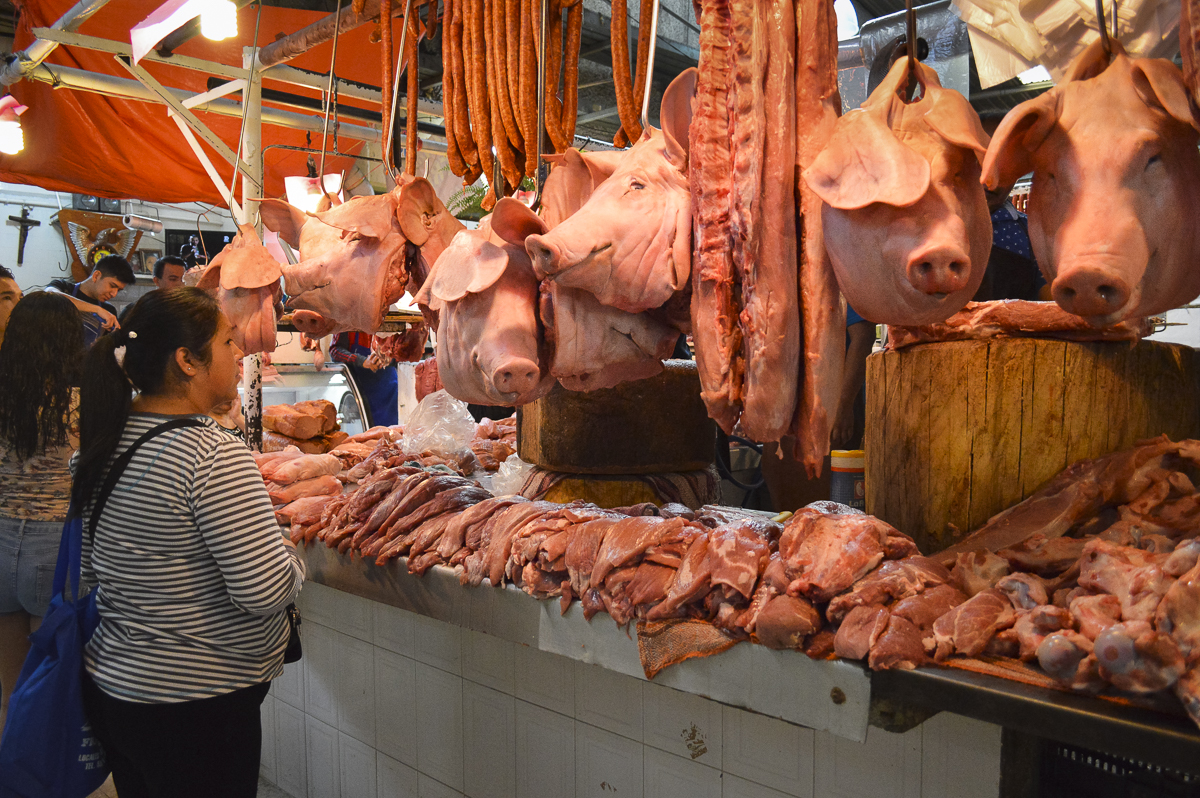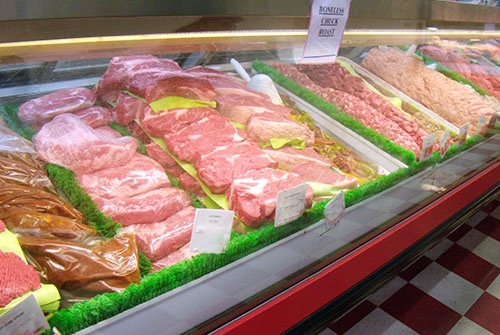Why Bagley Farms Meat Market Edwardsville IL Is the Best Option for High Quality Meats
Why Bagley Farms Meat Market Edwardsville IL Is the Best Option for High Quality Meats
Blog Article
Discover the Art of the Butcher's Cut in a Modern Meat Market
In the ever-evolving landscape of modern-day meat markets, the butcher's cut has transcended its typical roots, combining old-time workmanship with contemporary methods. bagley farms meat market edwardsville il. Today's butchers are not simply processors of meat; they are experienced artisans who emphasize sustainability and ethical sourcing. Their knowledge in picking and preparing cuts tailored to particular culinary demands supplies an unrivaled dining experience. What absolutely establishes the contemporary butcher apart is their ability to forge a much deeper connection in between customers and the origins of their meat. Just how do these masters equilibrium custom with advancement, and what implications does this have for the future of meat consumption?
Advancement of Butchery Methods

The mid-20th century saw butchery techniques even more refined by scientific insights into muscle biology and meat aging, enhancing both tenderness and preference. Technologies like vacuum cleaner product packaging and refrigeration expanded item shelf-life, enabling butchers to branch out offerings and enhance high quality control. This period likewise marked the rise of specialized equipment, such as band saws and meat slicers, which enhanced precision and effectiveness in meat processing.
Computerized systems currently aid in monitoring animal provenance and enhancing cuts to meet details customer choices. Additionally, a rebirth in artisanal butchery has arised, mixing conventional abilities with contemporary expertise to cater to customers looking for moral and lasting meat alternatives.

Recognizing Meat Cuts

Recognizing the ins and outs of meat cuts is vital for both butchers and consumers looking for high quality and value. For butchers, specific cuts show skill and regard for the craft, making sure minimal waste and optimum return.
The primary groups of meat cuts consist of primal, sub-primal, and retail cuts. Primitive cuts, such as the loin, rib, and chuck, are the big areas at first separated from the carcass. Butchers after that break these down additionally into sub-primal cuts, prior to finally producing retail cuts readily available to consumers, like ribeye or tenderloin. Each phase needs careful attention to physiological structure and muscular tissue structure.
Comprehending muscle structure is read this essential; muscular tissues used extra frequently by the pet tend to be tougher and are best matched for slow cooking approaches, while less-used muscles, like those discovered in the loin, are more tender and suitable for cooking or roasting. Familiarity with these distinctions encourages consumers to make educated choices, improving their cooking undertakings.
Selecting Quality Meat
Picking the ideal meat includes more than simply choosing a visually enticing item from the screen. The art of selecting top quality meat calls for a discerning eye and knowledge of specific features his comment is here that symbolize freshness and quality.
Second of all, consider the marbling, which describes the white streaks of fat within the muscle. Proper marbling is a vital sign of tenderness and taste, as it melts throughout food preparation, enhancing the meat's juiciness. Bear in mind, greater marbling typically correlates with exceptional high quality cuts, such as USDA Prime.
Texture is an additional vital element; meat needs to really feel firm to the touch, not slimed or excessively soft. Additionally, bear in mind the fragrance. Fresh meat should have a tidy, neutral odor, complimentary from any type of sour or off-putting smells.
Combining Cuts With Food Preparation Techniques
Successfully coupling cuts of meat with the suitable food preparation techniques is important for accomplishing optimum flavor and structure. These approaches improve the meat's all-natural flavors and make certain a juicy surface.
Alternatively, harder cuts like brisket and chuck roast are rich in collagen, which breaks down into gelatin when cooked next page slowly. These cuts are optimal for braising or slow-moving roasting, permitting the meat to soften over time and develop deep, complex flavors. Similarly, cuts such as short ribs and pork shoulder fare well with slow-cooking methods, where extended cooking times change their durable appearances right into delicious meals.
Lamb shanks and oxtail, which need prolonged food preparation to soften, are excellent prospects for cooking or sluggish simmering. These methods coax out rich, passionate flavors while keeping moisture. By comprehending the distinct characteristics of each cut, cooks and home chefs alike can raise their culinary productions, ensuring each recipe is both satisfying and memorable.
The Butcher's Duty Today
Browsing the evolving landscape of the modern meat market, the butcher's duty today extends past mere prep work of cuts. Contemporary butchers are culinary artisans, instructors, and advocates for lasting practices.
Along with crafting accurate cuts, butchers currently engage directly with consumers, providing cooking suggestions and tailoring options to fit specific needs and choices. Their know-how in meat aging, marbling, and flavor profiles encourages consumers to make enlightened decisions, boosting their culinary experiences. This personalized solution exhibits the butcher's evolving function as a relied on advisor in the cooking area.
Furthermore, butchers are crucial in minimizing waste, using whole animals to create varied products such as sausages and stocks - bagley farms meat market edwardsville il. This detailed approach not only appreciates the pet but likewise lines up with modern sustainability objectives. This way, the modern butcher symbolizes both custom and technology, adapting to an ever-changing market while protecting the creativity and honesty of their craft

Verdict
The modern butcher's craft elaborately weaves conventional techniques with modern-day technologies, stressing sustainable methods and honest sourcing. Proficiency in comprehending diverse meat cuts and top quality signs empowers butchers to give educated recommendations, straightening particular cuts with optimal food preparation methods. This proficiency not just elevates cooking experiences but additionally enhances the link between customers and the origins of their food. By recognizing historical methods while embracing modern needs, the butcher's role continues to be crucial in today's innovative meat market.
Report this page